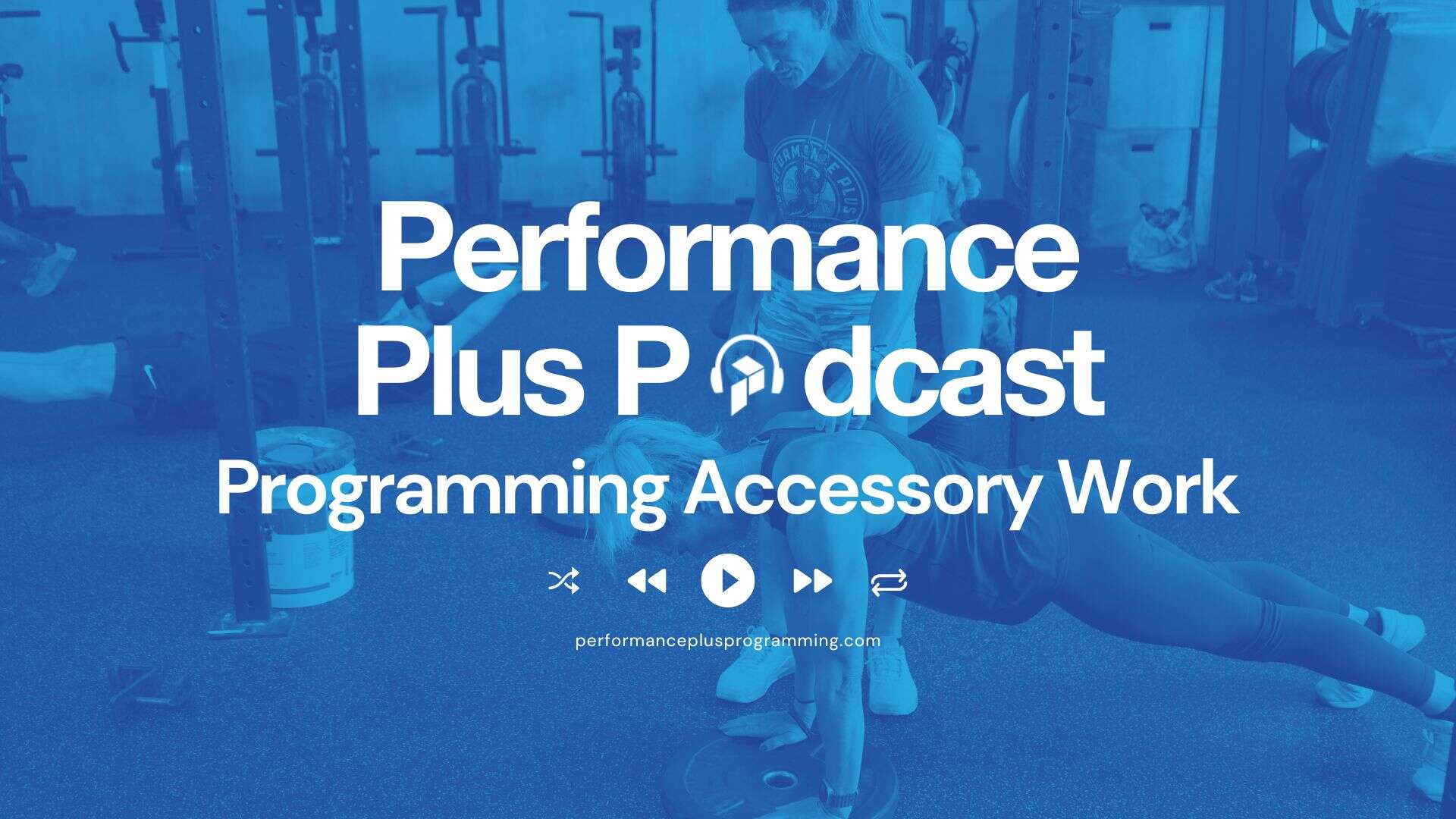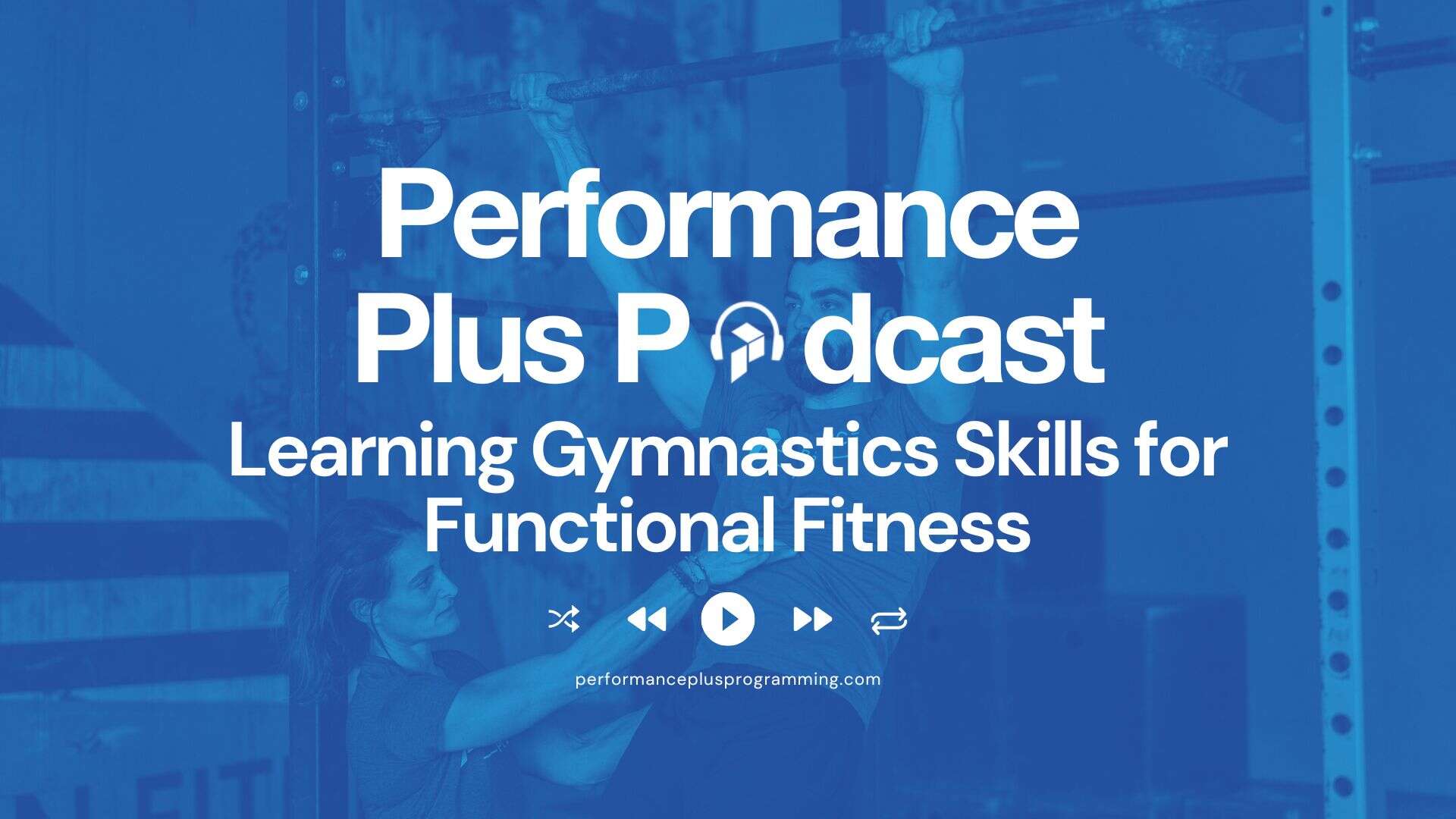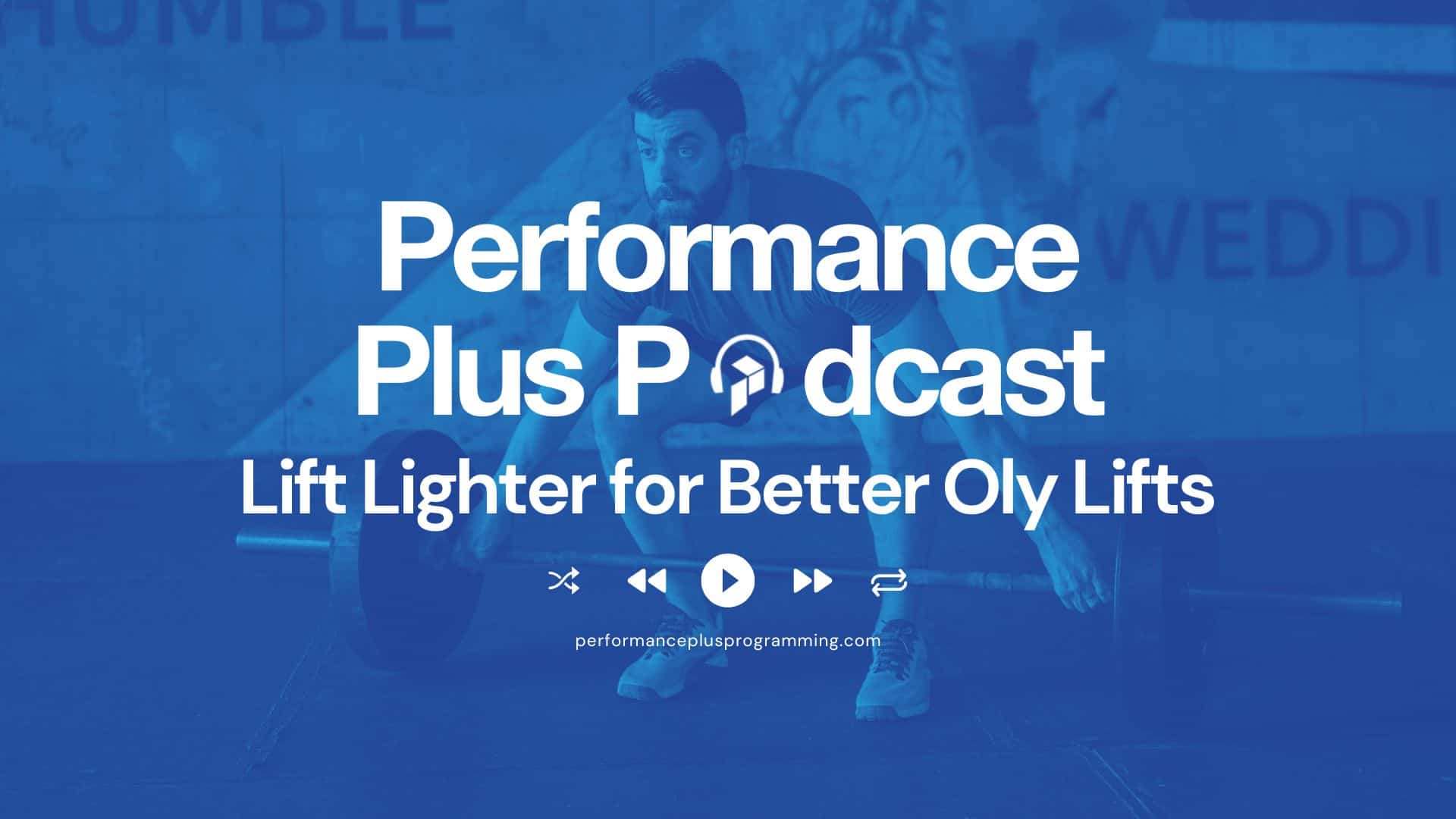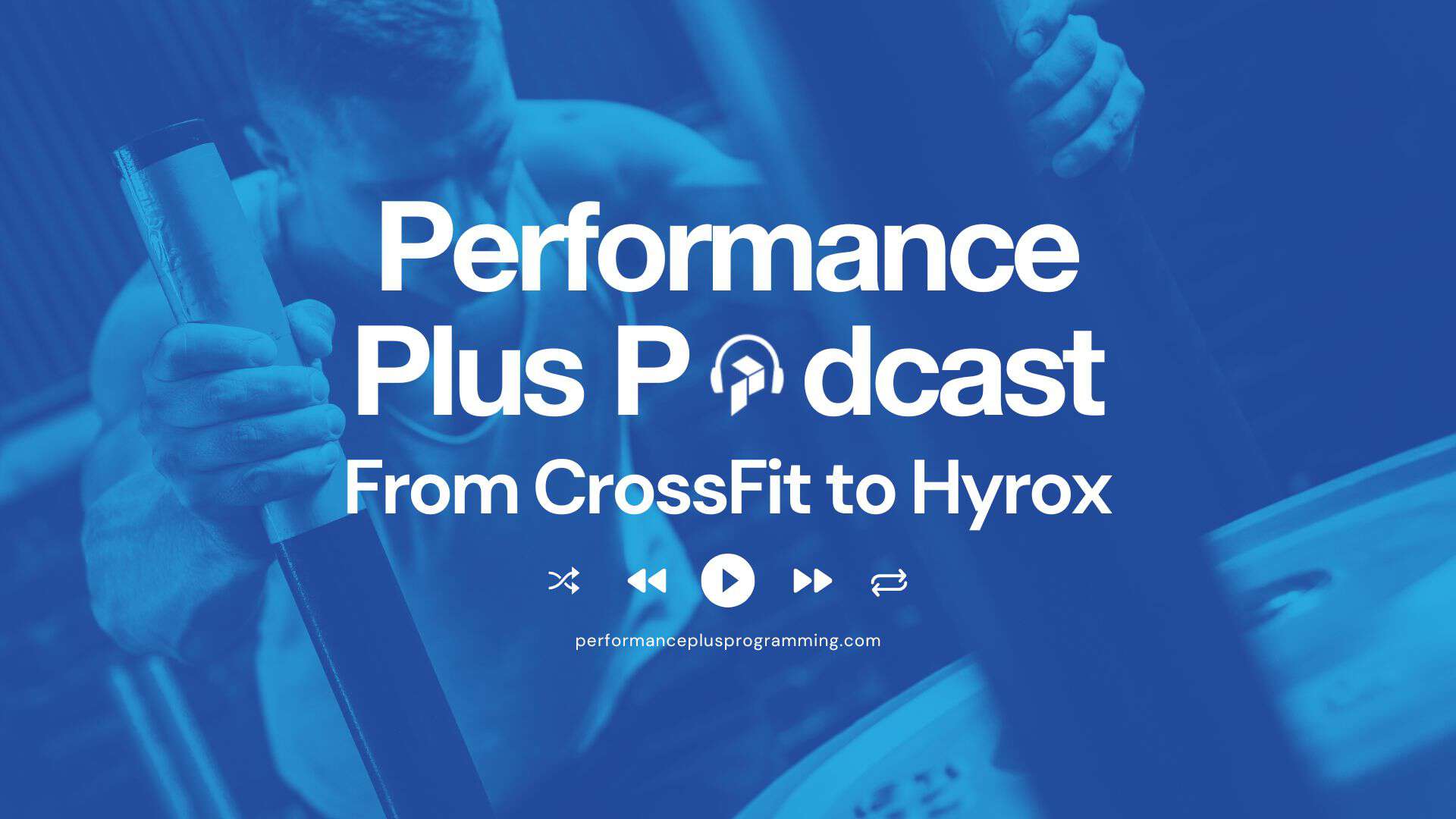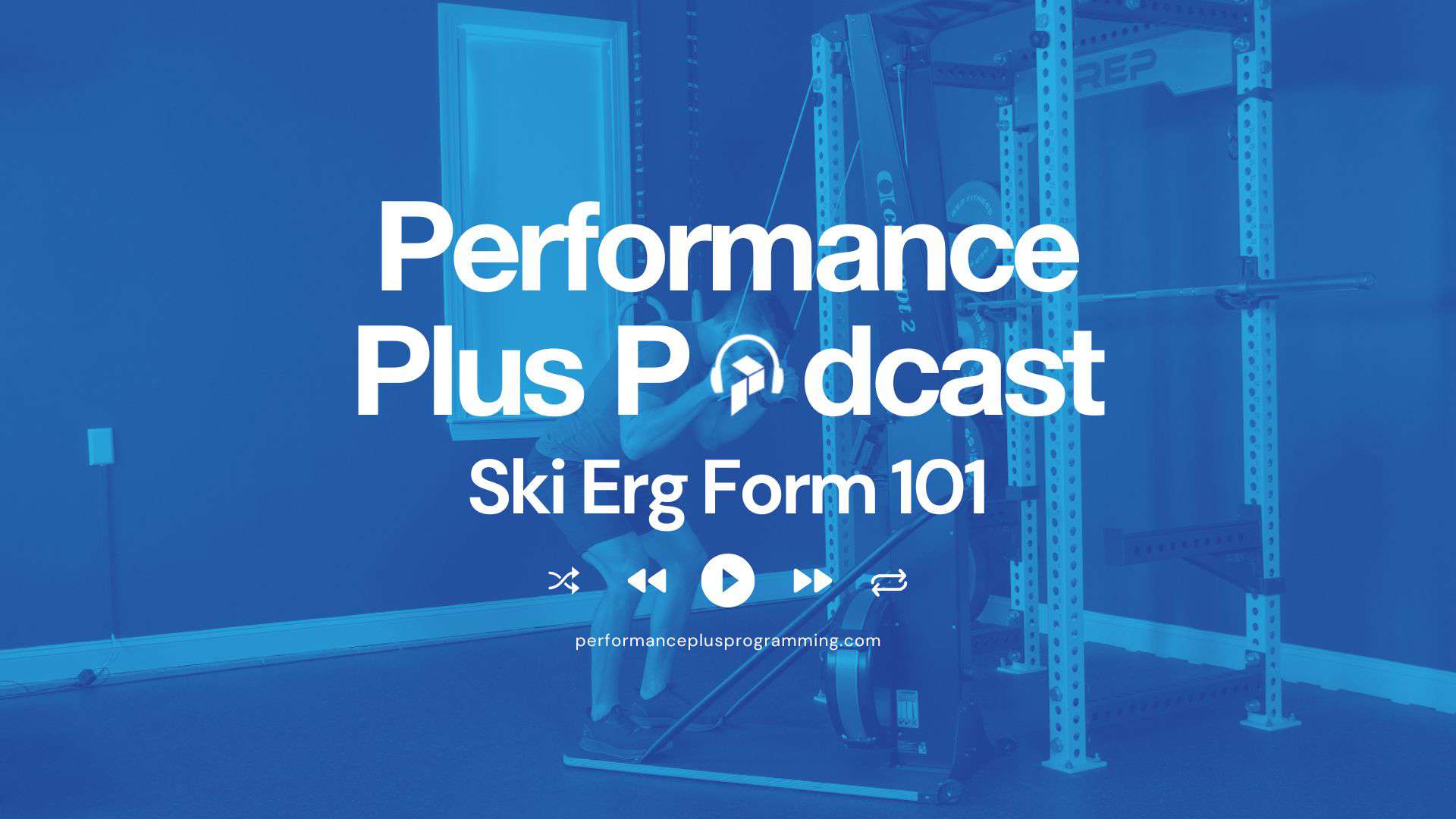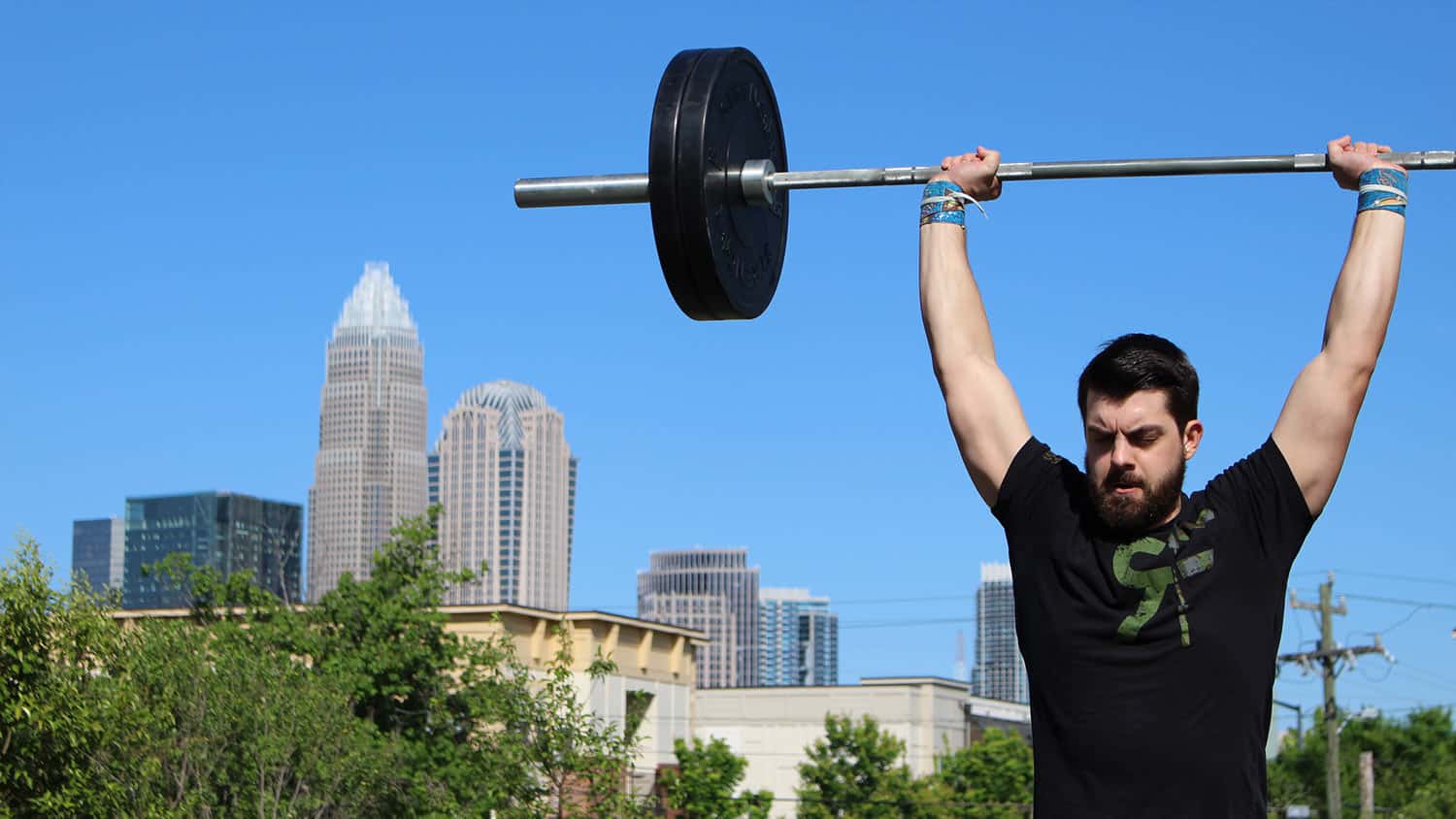
E10 – Why You Can’t Handstand Walk with Pamela Gagnon and Johnny B
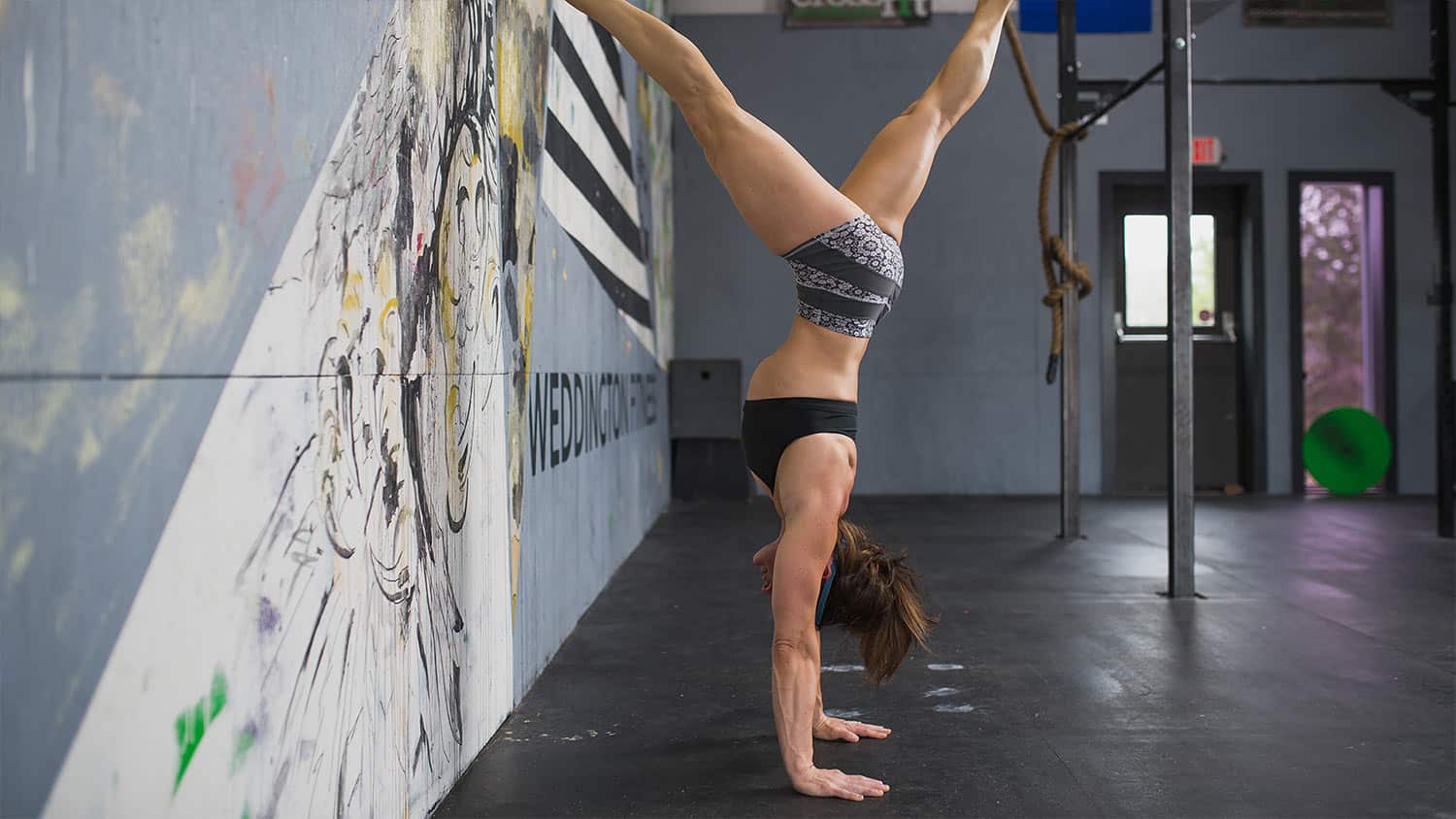
Are you smashing your head into the wall trying to learn how to handstand walk? Have you been practicing the handstand walk weekly or daily with no progress? Then you need to check out episode 10 of the Performance Plus Programming Podcast because gymnastics expert Pamela Gagnon sits down to explain why you (and I) can’t handstand walk and provide some solutions to fix your handstand walk.
Topics Covered On The Show
- The foundation of a handstand walk
- Benchmarks for progressing to a handstand walk
- Pointing the toes or not
- Why games athletes shouldn’t scorpion the handstand walk
- How to properly progress to a handstand walk
Programs talked about in this episode include:
- Pressing Mechanics for Gymnastics
- Handstand Strength and Stability Overhaul
- Handstand Balance Breakthrough
- Handstand Walking Program
- Gymnasty Abs
The Performance Plus Podcast is a short, actionable podcast that answers common questions from Performance Plus members and other athletes. Featuring Dr. Zach Log (The Barbell Physio), Pamela Gagnon, and hosted by Coach Johnny Bouchard each short podcast episode will help you achieve your goals. Whether you are training for a competition or want to get stronger, our step-by-step guide is all you need to take care of your body.
Follow Pamela Gagnon @pamelagnon
Follow Zach @thebarbellphysio and his website
Follow Johnny @coach_johnnyb
Ready to crush the Open? Join this program to access the Performance Plus Programming Open Prep Program. In it, we will cover all the bases: weightlifting, gymnastics, mobility, and conditioning to have your body ready to crush the Open.
The best part the program is 100% FREE!
Handstand Walking Podcast Episode Transcript
Coach Johnny B: [00:00:00] This is the performance plus. Today. I am joined by Pamela Gagnon, to figure out why you and I can’t handstand walk very well. Pamela, before we jump in, how are you doing?
Pamela: I’m doing well. Uh, it is winter break, so you’ve got some great time with my college kiddo and, um, yeah, we, uh, we’re going on a ski trip, so that’ll be fun.
And just helping some athletes get ready for the upcoming season. And that is why I thought. Definitely talk about why you meaning anyone can not handstand walk. If they want to. There was a glaring problem in our community.
Coach Johnny B: What is
Pamela: it? They do not have a handstand foundation.
Coach Johnny B: So I was afraid you’d say that.
Pamela: Yeah. So I [00:01:00] find it really interesting that athletes are willing to like train like three positions snatches and the, you know, um, overhead squats to make your snatch better. And, you know, um, we’ll sit there and do drills and Bergner warmup, but when it comes to gymnastics, they just go from a to Z without doing anything in between.
And knowing that there’s all the letters of the alphabet that need to be mastered before you get to the end. Um, so it’s like saying like, Teaching a kid to read sentences before they can even sound out letters. Um, that’s what, like why you’re probably banging your head against the wall and only doing the exact same thing year after year.
So if you stick to building strength, stability, and foundation, and the foundation is. Spatial and body [00:02:00] awareness. It is shoulder stability and strength. It is being inverted every single day, but in more of a like progressive progressional way. So, um, In order to know how to manage walking forward, backwards side or south side side, you have to understand where your body is in space.
So you need to be able to stack your hips over your shoulders and your shoulders over your wrists. And, um, how are your fingers and palms moving? So you can equally balance as you press through the floor and create tension. So, um, our performance. Like handstand programs are built based on the foundation.
So handstand walking is really towards the end of all of that, that final goal because handstand strength and stability is really the first portion of it. [00:03:00] And that is getting inverted all the time and building the strength and stability in your shoulders. Um, so once you learn that and you get comfortable with shifting.
Wait in a handstand, hold on the wall. Then we moved to handstand, balancing and building that, um, you know, capacity to be able to understand where we are in space. If there is no wall behind us, also, you have to like trust yourself. Right? We’re like most of us are adults, like throwing ourselves through the air.
So. A lot of the reason handstand walking is difficult is because you don’t know how to, you know, trust your intuition if you’re falling backward or like how to save yourself without getting hurt and splatting straight out of the floor. So that’s why having that foundation is so important.
Coach Johnny B: Um, how so?
The thing that was fun is it. Beyond [00:04:00] that, like having the balance, having the proprioception, having all those things, like just getting into the position, right? Like so many people kick wildly into a handstand and wonder why they have no chance at like actually pulling into a position that they control.
Uh, the programs address that. Correct. I mean, there’s lots of drills where you’re kicking and, you know, barely touching the wall, pulling foot back off. Uh, and I think that is one thing that I’ve noticed, at least with the people that I work with, that they have no control over just the start of the movement, let alone being able to get there.
Um, that’s
Pamela: that is such a good, good point. If you watch handstand balancers like on Instagram and you watch them kick up or. They are already under control before their last foot leaves the ground. They’re already finding that balance and it takes flexibility and it definitely takes, um, a lot of drills and practice.
And yes, that is a huge part of the foundational work is [00:05:00] learning to kick up under
Coach Johnny B: control. Uh, it’s realistic that if you hit handstand, um, uh, balance breakthrough and strength and stability in the right order, uh, that. You could actually, within that 12 weeks, see a measurable prog progression towards walking around.
Pamela: Yeah, absolutely. Um, if you’ve really have no experience being upside down, then you might have to go through like that pressing mechanics, um, gymnastics program as well too, to just add a little bit more of the foundation, that’s like a, a real, you know, The first level. Um, but absolutely it will be like a light bulb went off like, wow.
And a lot of it is just practice because practice. Builds muscle memory and muscle memory builds, strength and strength and muscle memory build, you know, spacial and body awareness. [00:06:00]So, yeah.
Coach Johnny B: Uh, do you see that peoples there’s actually a physical, like weakness in the shoulders where people are actually too weak to get into position, or is it more of a proprioception?
Pamela: Um, yeah, so it can definitely be both. So, um, athletes who have weak shoulders, that’s why we do strength and stability first. Um, we’ll have a much harder time getting into a staple handstand, but also the flexibility of your range of shoulder, um, is huge too. So the tighter your shoulders are them, um, more compromised.
Positioning has to be. And so our overhead mobility program over men, overhead mobility overhaul is one of the programs I recommend for everybody who has tight shoulders, who want to do good hints. I’m going to add
Coach Johnny B: on that. Just, uh, there, Zack has some, uh, they’re called shoulder flection assessments on his Instagram.
Uh, if you go [00:07:00] do that assessment and you compensate, uh, you’re probably not ready to start tackling hand yet. Like you should definitely work the mobility program and then, uh, then get into the handstands. I think you talked about being able to stack your wrists, shoulders, and feet and align. And if your shoulders can’t get in the position, then there’s just not going to happen or not very happen very easily.
You’ll set yourself up for an injury. So, um, make sure you’re, uh, make sure you’re assessing yourself and being realistic with it too, uh, before, uh, just jumping in anything, uh, after. So let’s say you knock out the first two programs and your. Uh, what’s the benchmark to be ready to start taking on the handstand walking program.
Pamela: Uh, definitely a freestanding handstand where you’re comfortable away from the wall. You know, you don’t have to hold it for 20 seconds, but you have to at least be able to hold it for a solid five to seven to foam. I mean, five to 10 seconds, you know, and understand how to [00:08:00] save. Like if you’re leaning, um, overarching, how to use your fingers and palms to press through the ground and open your shoulders back up, or bring the rib back down.
So, you know, you. Able to, once you start adding momentum, really control where you’re, you’re going,
Coach Johnny B: uh, feet pointed or.
Pamela: So great question. Um, I always train to the best possible position and when our feet are pointed and our body is staffed, we have the most tension. And so it’s like, um, it’s much easier to move your body through space.
When you are tense versus when you are, have no tension, um, it’s like a slinky versus a rubber band, which we’ll go further, you know? Um, but yeah. You know, I also train that because if you want to eventually learn freestanding, handstand, pushups, [00:09:00] or handstand pushups on the rings, you can’t be in this crazy overarch and you have to be tight.
So trading great position in the beginning of the foundational work will translate. Um, you know, if you want to get those, those advanced movements and as a coach, it’s not my job to say you will never be able to do that. It’s my job to give you the foundation. That if you eventually want to get there, you can,
Coach Johnny B: how much does a midline work play a note as well?
Like as far as like being able to have control and awareness over like hollow arch position and being able to, uh, even like control that piece. Right. Because you feel like some people. Just don’t even have awareness of that. Do you think the handstand program fixes that as well, or like a core strength program might be something to add in as well in your training?
Pamela: Yeah, it definitely works on that. There’s a few drills. I, um, have all the programs that will work on that, but I really like [00:10:00] our gymnastic apps for that. Um, I think there’s a lot of. Strength core strength work, where you go from art to hollow. And that helps a lot as well, too. Um, and it’s, it’s think of it like trying to like push press with a huge arch or like zero tension in your core.
Versus if you lock in and push press with a much more solid base, it’s just easier. The barbell feels lighter. And so that’s you upset?
Coach Johnny B: Ah, that is not me upset me upside down. Is that guy, the overarching guy. All right. So I’m sure there’s going to be people that say, well, what about the Games?
Those people look like scorpions. Is that a trained position? Is it necessary or can you still look beautiful and like you do and, and move.
Pamela: Yeah. So those athletes have a foundation. Um, they’re under fatigue. When I walk fast, I do bend my knees, but I don’t arch my back. I, um, keep it in line [00:11:00] because I find that I just have a much more stable, strong base when I do that.
Um, but what you don’t see is that they don’t need to do that. And they’re doing that under fatigue and they’re doing, you know, whatever they can to basically when that day. Um, I’d actually probably go back and fix some of them because I’d be like, Hey, you know, you can kick your feet and you can move through space like that.
But if you stabilize your spine and stack your spine, You’ll actually probably generate more power and control. So, um, you know, I had this athlete once who was like, oh my God, I want to learn to handstand walk, but I just can’t do that scorpion thing. So I’ll never be able to walk. And I was like, oh my, I mean, my stomach turned.
I was like, wait, what you actually think the scorpion is like, how you handstand walk? And I was like, whoa, it’s just because it makes a really cool picture. Right. [00:12:00] Everybody loves that. It’s so cool. And handstands. If you look at a gymnast, they do crazy Archie handstands. And if you look at Acrobatiq. Um, you know, circus athletes, so who handstand balancers it, but they have the flexibility in their spine to do that.
They have thoracic mobility and they’ve been practicing that. So when they’re done, they don’t have. Like pain in their lower back because they train very different than how we,
Coach Johnny B: yeah. And I think it’s interesting because they have total control globally over the entire position of the spine, right? Like every single little paraspinal muscle from the, you know, the sacrum all the way up to the neck, they can feel that they can control it.
And they, they are intentionally RJ they’re intentionally bowing, uh, for a look and for a position, especially if you’re talking about like artistic gymnastics, right? Like. You know, it’s not, when you see people do it in a the cross training setting, they have like a flection point, [00:13:00] right. Between their thoracic spine and their, their lower back.
And that’s not good. You don’t want to hang out that way. And that’s, I think people actually get, uh, injured if I’m not mistaken. Um, from that like in cross training settings, just from doing like a pulling exercise, coupled with a handstand pushup, like there’s just a lot of flection extension at a joint a lot of times, and they’ll get a produce injury.
So. That’s
Pamela: an excellent point. Like the glow, there’s nothing wrong with global extension. It’s just, is it at one point, you know, instead of like being, uh, over, over the entire spine, like
Coach Johnny B: you said, there’s no right angles in a gymnast, right? Like everything looks like it’s a continuous line. It’s just a different shape.
But when you see me do a handstand walk, I look like a stick figure. That’s drawing, you know, terrible angles. It’s awful. Um, well, I, you know, I, I will speak to the, uh, the handstand, um, uh, strength and stability overhaul. I [00:14:00] did that a long time ago when I was coaching fitness almost full-time um, and in the gym all the time, I just.
Uh, and it works fantastically and actually got to the point where, um, two opens ago can handstand walk, no problem. And then have, since, you know, life’s gotten in the way and that skill goes away. Like that is truly, uh, one of those skills where if you don’t practice it regularly, uh, it’s harder and harder and harder to find that balance point stick in it, but it will speak that it really, really works.
And if I want to fix myself, I’ll just. Go back and do it again. And, and then, uh, when it doesn’t work steady videos and ask, why is this not working?
Pamela: Why, why did this? Yeah, the court literally like 10 to 15 minutes a day. And you know, you can fit that in, you know, in geo garage workout or whatever. And
Coach Johnny B: it’s fun, man.
Like I got, it’s a really fun thing to get inverted. It’s really fun thing to do. Hanson shift and lifts and walk over plates and practice, uh, the balance and pulling your feet off the wall like that. Yeah. Feel, uh, it gives you that bad-ass feeling after you’re done with it. [00:15:00] And that’s a really, like, I think it’s a great way to end a session.
You walk up the door feeling really good on top of getting closer to that skill. I want to add wonderful walking out the door
Pamela: on your, I
Coach Johnny B: know that was a goal. Uh, the gym you’ve been urging before as a super long track. And like, I always had this fantasy that I was just going to kick up and walk. It’s like 112 feet just walk the 112 feet out of the gym, like, uh, and like high five somebody was, and I tried it and it would make it, you know, 50 to 75 feet does not have the stability, but yeah, that’s a, that’s a good fantasy.
Just handstand walk out of the gym. Uh, high five, everybody with your. Uh, I want to add one other thing in this. Cause I think there’s a lot of people out there that will, would have this experience. There’s kind of this feeling. If you’ve never done gymnastics before that you’re not progressing when you’re doing it sometimes.
Like if you, uh, you finished the second week of the program and then you start toying around with a hand handset in the middle of the room. A lot of times, it doesn’t feel like you’ve made any progress, but it’s really strange how you get to the end of it. And [00:16:00] then there’s this just almost like aha moment where you’re like, whoa, okay.
Like I have acquired a skill. Like I feel very, very comfortable, uh, pulling my feet off the wall and doing a handstand near the wall. Uh, and it’s, uh, it’s not like weightlifting where you can see your muscle tissue get bigger. It’s weird. It’s a hard, a hard feeling to have from within, but it does really work.
So. Yeah. Yeah. Cool. Uh, so the big takeaway there, if you don’t have a freestanding handstand, you need to do this. Let’s fix it, everybody. Yeah.
Pamela: You can’t say I’m walk cause you don’t have their foundation. So
Coach Johnny B: that’s a common theme for us and I’d love it. Like if you don’t master the foundations, you can’t build a house on it.
So, uh, good stuff. Anything you go on doing anything this weekend. You’re not, you’re not at Christmas. You’re you’re Jewish. So you’re not celebrating Christmas, correct?
Pamela: We, yes. We don’t tell weaknesses, but I have lots of friends that do. And so I’m going to go visit some friends and. [00:17:00] Where I’m, this is Claus hat and ring their door.
My friend has two little kids and I’m like, I’m totally doing this.
Coach Johnny B: That’s so fun. That’s so cool. You’re gonna be sister. Are you going to handstand walk up to their door, wearing a misses class? Uh,
Pamela: her younger daughter does day gymnastics, so that would be super cool, but the hat wouldn’t
Coach Johnny B: stay off. Well, you have an
Pamela: amazing Christmas and
Coach Johnny B: yeah, it’s going to be a good time.
So I can’t wait. I’m ready for a few days off of work. That’s. Nice. Well, thanks guys for tuning in. Um, again, all the programs are linked down in the bio and there’s also our goals page on our website, uh, which will show you the progression that you need to get to handstand walk if you’re not there. So check both those resources out, make sure you follow, uh, Pamela Jean on, on Instagram.
Um, All of this stuff and more, uh, it’s the best follow on the internet if you’re not doing it. So make sure you do it. Um, have a happy [00:18:00] holidays and we will talk to you guys in the new year. .
